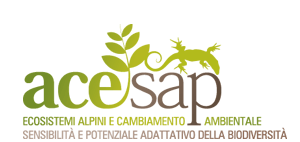| 1. Delayed germination is reported in the seeds of many plants and, exactly opposite to the common view, its cause generally lies in the seed coats rather than in the embryos; but in the hawthorns, as perhaps in some other seeds, it is due to embryo characters. 2. In the upper seed of the cocklebur the delay is secured by the seed coat excluding oxygen, while in Axyris amaranthoides, Abutilon Avicennae, and many other seeds, it is secured by the coats excluding water. 3. In Iris seeds the failure to germinate is due to the endosperm and cap stopping water absorption before the quantity necessary for germination is obtained by the embryo. 4. In Plantago major, P. Rugelii, Thlaspi arvense, Avena fatua, and others, the real method by which the coats secure the delay is not yet determined, but there is no doubt that the delay is due to the coats. 5. Seed coats which exclude water are much better adapted to securing delays than are seed coats which exclude oxygen, because of the much greater reduction of respiration in the first case. 6. In nature growth of the delayed seeds comes about through the disintegration of the seed coat structures by a longer or shorter exposure to germinative conditions, and the length of the delay depends upon the persistence of the structure securing it. 7. In the cocklebur the bur aids in preserving the seed coat of the upper seed by being most persistent over it. 8. Even in the hawthorns, where the delay is secured by embryo characters, the germination finally comes about in the course of long exposure to germinative conditions and not in dry storage. 9. In the cocklebur the seed coats of both the upper and lower seeds cut down the oxygen supply, but the first the more markedly. This gives the upper seed a much higher minimum germinative temperature and the lower seed a somewhat higher one. Hence we have in the cocklebur seeds two minimum germinative temperatures; one with the seed coats intact and a much lower one with the coats removed. In the upper seeds these differ by fifteen or more degrees; in the lower seeds by three to five degrees. 10. High temperatures bring about the germination of the upper seeds of the cocklebur with coats intact by increasing the rate of diffusion of oxygen through the seed coat and by raising the respiratory ratio. 11. The minimum germinative temperatures of the seeds of the cocklebur Plantago major, P. Rugelii, Thlaspi arvense, and various other seeds, with the seed coats intact, is far above the highest minimum germinative temperature reported; while in the cocklebur and Plantago major with coats removed this critical temperature is consideably above the highest reported. I am indebted to Professor CHAS, F. HOTTES, of the University of Illinois, for suggesting the problem in reference to the cocklebur, and to Professors JOHN M. COULTER and C.R. BARNES for kind suggestions and assistance during the progress of the work. |
 Role of Seed (file pdf, 2.480 KB)
Role of Seed (file pdf, 2.480 KB)





